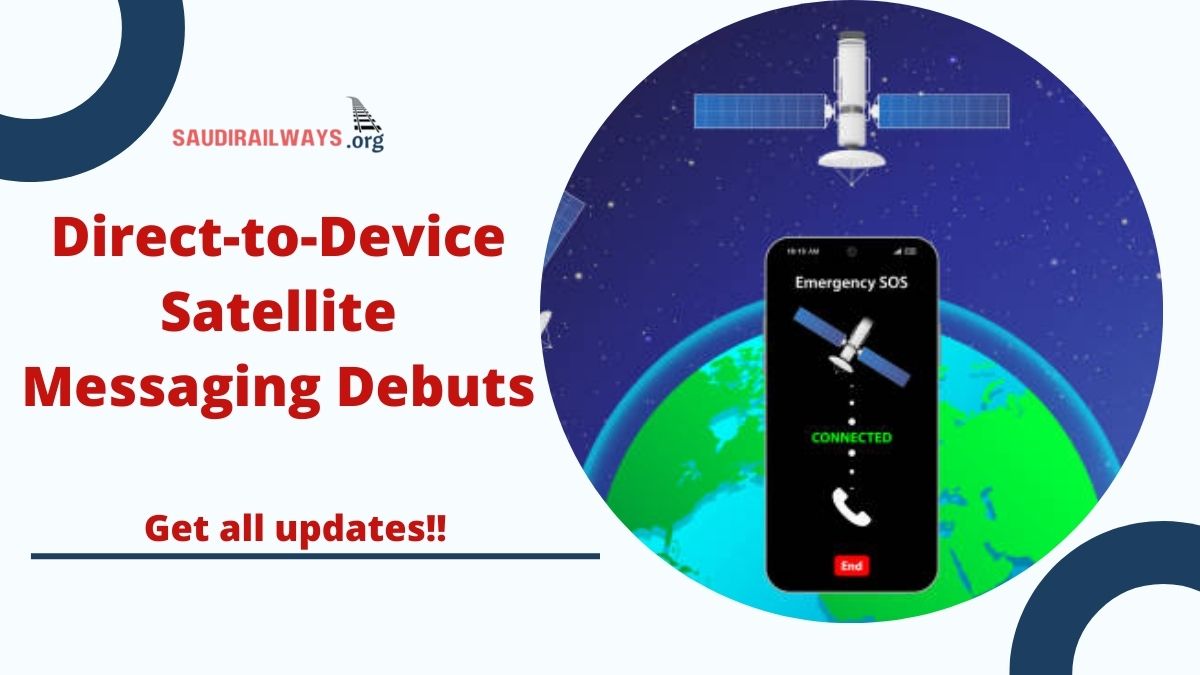In a groundbreaking development, Viasat, Inc., in collaboration with Skylo, successfully demonstrated Direct-to-Device (D2D) satellite messaging technology for the first time in Saudi Arabia. This innovative service enables mobile devices to communicate directly with satellites, bypassing the need for additional hardware.

Contents
What is Direct-to-Device (D2D) Messaging?
D2D technology allows everyday devices, such as smartphones, to connect seamlessly to satellites. Unlike traditional satellite communication, this approach eliminates the need for specialized hardware and aligns with 3GPP Release 17 standards, ensuring global compatibility.
Key Highlights of the Demonstration
- Event Context:
- The demonstration took place at the “Connecting the World from the Skies” event in Riyadh.
- Hosted by the Communications, Space & Technology Commission (CST) and the International Telecommunication Union (ITU).
- Technical Achievements:
- Two-way messaging, including SOS alerts, was successfully transmitted from a commercial Android smartphone via satellite.
- The system used Viasat’s L-band satellites over the Indian Ocean, leveraging Skylo’s Non-Terrestrial Network (NTN) infrastructure.
Benefits of D2D Messaging
- Enhanced Accessibility:
- Expands connectivity to remote and underserved areas, such as deserts, rural regions, and offshore locations.
- Supports industries like agriculture, logistics, and emergency response.
- Improved Safety:
- Enables real-time SOS messaging and emergency communications in areas lacking cellular networks.
- Cost Efficiency:
- Utilizes existing smartphone hardware, reducing the need for costly, dedicated satellite phones.
Statements from Viasat
Sandeep Moorthy, Chief Technical Officer at Viasat, highlighted the significance of the milestone:
“By showcasing D2D technology in Saudi Arabia, we’re demonstrating how this innovation can bridge connectivity gaps, especially in regions with limited terrestrial networks. This technology has the potential to revolutionize industries and improve quality of life by providing reliable, on-demand connectivity regardless of location.”
He further emphasized Viasat’s dedication to aligning its technological advancements with Saudi Arabia’s Vision 2030, which aims to foster sustainable development and digital transformation across the kingdom.
Future Implications of D2D Technology
The successful demonstration of direct-to-device messaging opens up exciting possibilities for the future:
- Expanded Global Reach:
- The integration of D2D technology with existing mobile networks can connect billions of people in remote regions, reducing the digital divide.
- Revolutionizing Industries:
- Industries like agriculture, maritime, aviation, and supply chain management can benefit from seamless communication, improving efficiency and sustainability.
- Emergency Preparedness:
- Real-time SOS capabilities can enhance disaster response, ensuring life-saving connectivity during emergencies.
- Environmental Benefits:
- By eliminating the need for additional infrastructure, D2D services reduce environmental impact, aligning with global sustainability goals.
Technical Overview
The Viasat-Skylo demonstration showcased the robustness of L-band satellite technology in supporting D2D messaging:
- Reliable Spectrum: L-band frequencies are known for their resilience to weather conditions, ensuring consistent performance.
- Global Standards: By adhering to 3GPP Release 17, Viasat ensures compatibility with a wide range of devices, fostering broad adoption.
- Collaborative Ecosystem: The partnership with Skylo underscores the importance of ecosystem collaboration in advancing satellite communication technologies.
Aligning with Vision 2030
Saudi Arabia’s Vision 2030 places a strong emphasis on technology-driven growth and sustainable development. The integration of D2D messaging into the kingdom’s communications infrastructure supports several Vision 2030 objectives:
- Improved Infrastructure: Strengthening connectivity across urban and rural areas to foster economic growth.
- Digital Transformation: Empowering businesses and individuals with innovative technologies to thrive in a digital-first world.
- Sustainability Goals: Incorporating eco-friendly practices in technology implementation, including reducing reliance on terrestrial infrastructure.
Conclusion
The introduction of direct-to-device satellite messaging in Saudi Arabia marks a turning point in the evolution of global connectivity. By leveraging cutting-edge technology, Viasat and its partners have demonstrated how innovative solutions can address real-world challenges, from bridging connectivity gaps to enhancing disaster preparedness.
Click here to know more.

I am a passionate technology and business enthusiast, constantly exploring the intersection where innovation meets entrepreneurship. With a keen eye for emerging trends and a deep understanding of market dynamics, I provide insightful analysis and commentary on the latest advancements shaping the tech industry.
